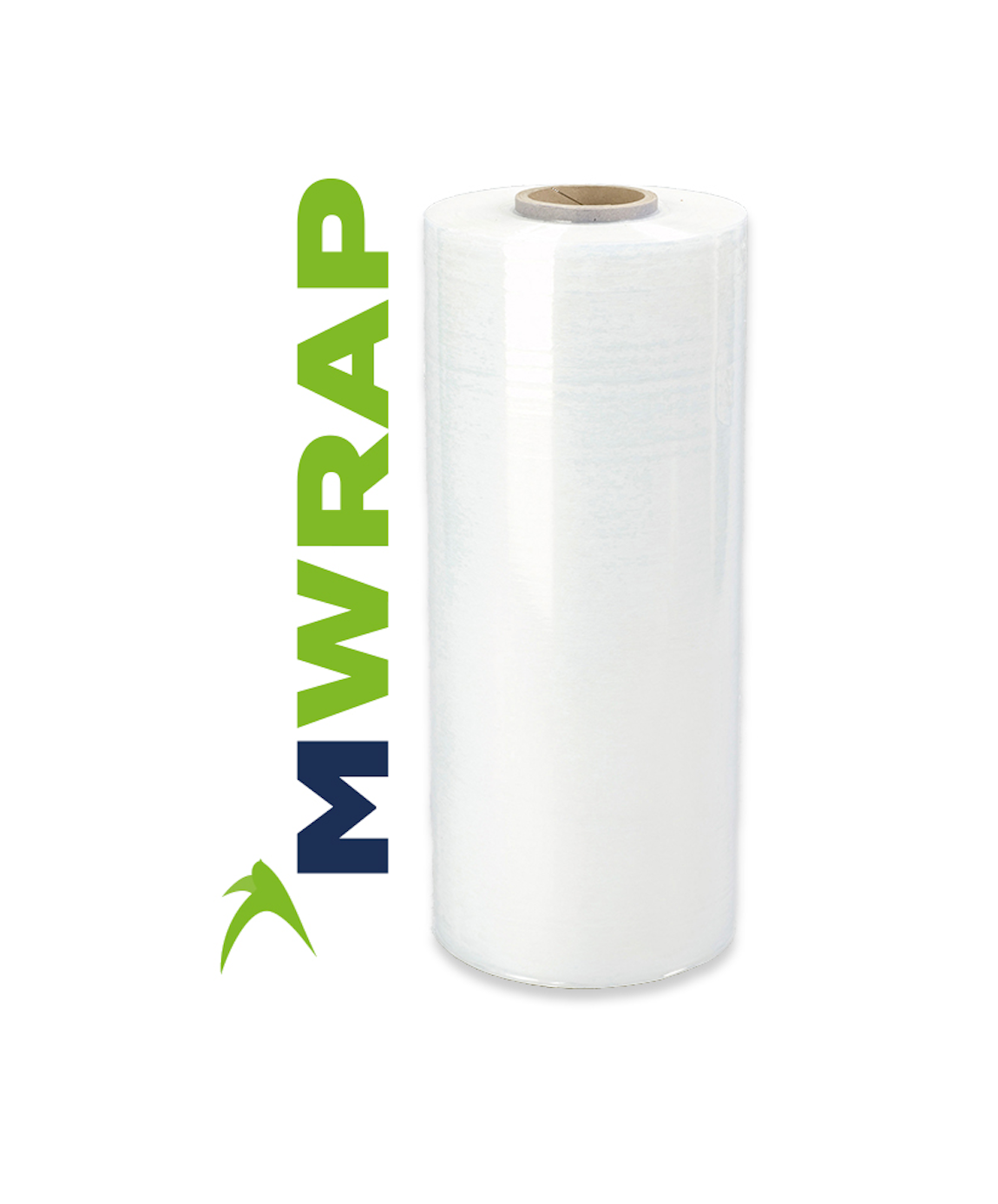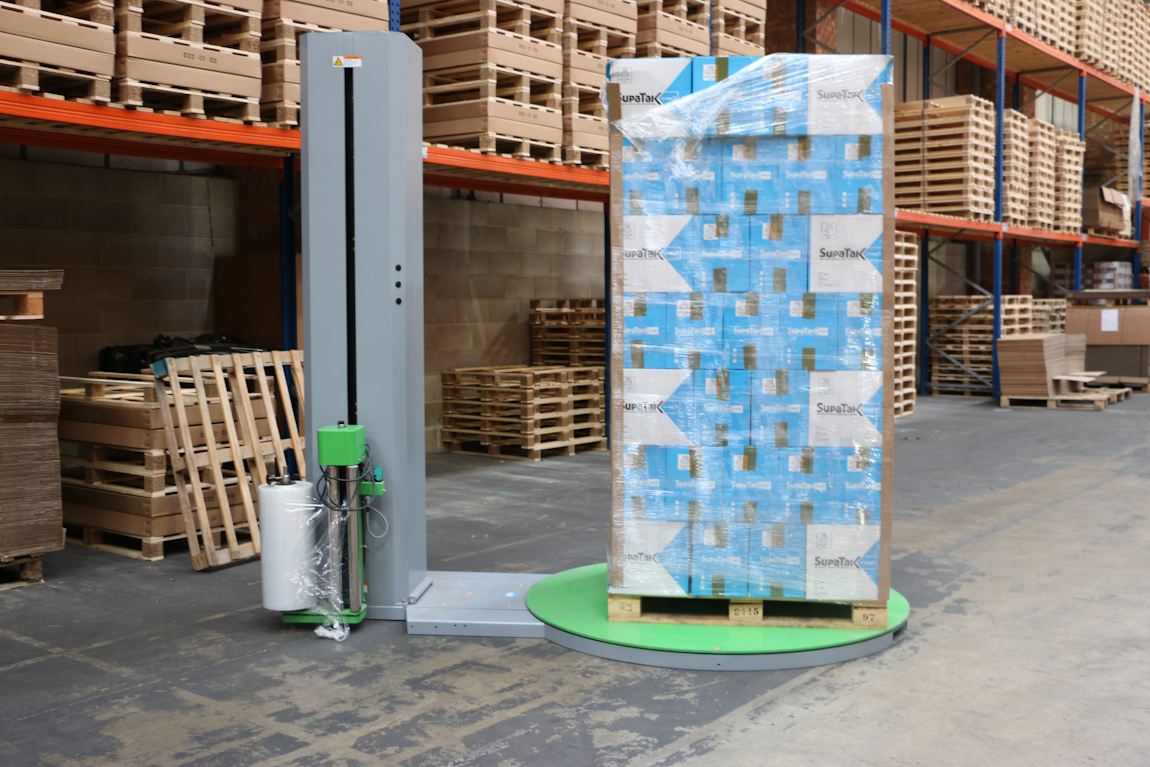This would lead to product damages which could then lead to more cost as you try to replace it – something that no business wants to deal with. So in this article, we will be discussing the most common mistakes made when pallet wrapping and how you can avoid them to minimise the risks of any damage.
What are the most common pallet wrapping mistakes and how to avoid them
When using stretch wrap to contain your products, there are a variety of mistakes that can arise. Whether it be from human error or incorrect settings on machinery, pallet wrapping is not something you should not take lightly as one wrong move and the whole shipment could lose strength and stability.

1. Using the wrong size and type of stretch wrap
Using the wrong type of stretch film can not only result in wasted materials, but it can also cause safety issues, injury, costly repairs, breakdowns and other unwanted occurrences. To avoid such mistakes, it is important to learn about the different types of stretch wrap available and the correct applications and machinery they should be used with.
After doing this, it is crucial to make sure that the stretch wrap you plan to use is the right size. If you use the wrong size of stretch wrap, you will end up not only wasting wrap, time, and money, but you would also be risking improper load containment. This can lead to a range of problems you will want to avoid, including product damage in transit.
At Swiftpak, we would recommend using our Machine Applied Stretch Wrap (MWrap) as it is a reinforced, stronger film that is durable, reliable and allows for easy wrapping of your pallets.
The size of stretch wrap you use should be decided by the shape and size of your products, as well as the width and height of your pallets. If you are unsure what type and size of stretch wrap you should be using, you can either use our stretch wrap calculator to see if you are using the correct stretch film or reach out to our packaging experts today and they will be happy to help.

2. Stretch film snapping or tearing due to load hazards or incorrect settings
Possibly one of the most common issues people find is stretch wrap tearing. This usually means that the stability, load containment and safety of the pallet has been compromised. Tears in the pallet wrap should never be ignored as the risks can include safety hazards, injury, damaged products, unnecessary clean up and slower production times.
The two most common reasons for film breakage are:
- Load profile hazards: most responsible for film breakage, anything from sharp corners or bumps can cause tears, punctures and stress on the film. As you are applying the stretch wrap it is important to check for any nicks, cuts or resin build up.
- Incorrect settings: the settings need to be applied consistently. If your stretch wrapping operation is missing the correct containment force throughout the load or is dragging film tails, this may result in transit product damage.
How to avoid stretch film breakages?
So, how do you avoid these stretch film breakages?
- Avoiding load breakages: try lowering the film tension or pre-stretch level. The tension should be set at the highest possible level without producing stretch film breaks or load crushing. Alternatively, turning down the film tension can work if you add more film layers.
- Avoiding wrong settings: check to make sure the stretch wrap is threaded properly and that the film tension is set correctly. If your operation has a fully automatic stretch wrapper, check the film clamp for any cuts on contact surfaces and ensure that the air pressure is correct for vacuum clamps.
- Avoiding tearing: it is recommended to use an automated or semi-automated stretch wrap machine that is programmed in advance with the proper settings for the right load. If you are not sure what the proper settings are for your machine or if you rely on hand wrapping your pallets, it is advised to have a packaging expert analyse your stretch wrapping process.
3. Not enough stretch-wrap!
The most obvious, but you would be surprised how many people can make this mistake. When wrapping your load, it is vital that you make sure you have enough stretch wrap to make your pallet secure. Baring this in mind, you will be needing enough to wrap at least 5 times around your pallet.
This is especially important if you do not have a stretch wrap machine, as you will need to have an effective manual stretch-wrapping technique to do this. If you are stretch wrapping your pallets by hand, it is recommended to twist the wrap every other rotation to increase the durability. Are you afraid about increasing your plastic usage? Try nano stretch wrap (MWrap) as this technology uses less plastic making it more sustainable than the more average stretch wrap.

3. Choosing the wrong pallet
Choosing the wrong pallet for your products can also cause several problems to arise. It can result in product movement in transit which can lead to product damage, it can also cause injury if you try to lift or handle a pallet that is not secure.
No matter what you are shipping, it is important that your pallet is large enough to secure your product without overhang as this can cause impact, punctures, and compression damages. It may be tempting to reuse old pallets, but this can be very risky if you do not take into consideration the structural integrity. Similarly, using pallets with broken boards or protruding nail heads can be problematic as they can cause damage to your cargo - or worse - cause injury to you.
To avoid the problems that can occur with choosing the wrong pallet, measure your cargo before you buy or build your pallet to ensure that it will be the correct size.
4. Poor stacking on the pallet
Many people make the mistake that the best way to stack cartons ready to stretch-wrap is just about making them fit on the pallet. However, this is not the case as if you do not evenly distribute the weight by putting the heaviest boxes at the bottom, you are massively increasing your risk of damage. Another mistake commonly made is using pallets that are too small and leave overhang making your carton vulnerable to more breakages.
Using the ‘pyramid stacking’ approach can also lead to damage to the packaging at the top and can cause the load to be less secure. An aligned column pattern is the best method to use as it ensures your pallet is level and flat, decreasing the chances of any damages.
To ensure a safer transit you can use the following tips:
- Align boxes in columns from corner to corner for the best stacking strength. If you choose to stagger your boxes, make sure to avoid interlocking or rotating layer patterns.
- Make sure to not align box corners over empty spaces between pallet deck boards.
- Use a flat layer of cardboard between every third layer to help distribute weight and protect the bottom layer.
- Ensure that the top layer is flat to prevent damage from any cargo that could be loaded above your pallet.
- Take a look at your pallet and inside each box to make sure they are balanced.
- Placing heavier boxes at the bottom and lighter boxes near the top can reduce the risk of damages.

Stretch wrapping from the packaging experts
In conclusion, to ensure that your load is secure and avoid risks of damages, we would recommend investing in a pallet wrap machine as it will save you on both time and money. They also help to reduce strain from manual wrapping whilst saving wasted film from excess or insufficient wrapping and improving load stability.
If you need any additional information on how to correctly stretch wrap your pallets, feel free to contact our packaging experts today and they will be happy to help you. Alternatively, use our stretch wrap comparison tool to find out if you are using the right stretch wrap for your products.